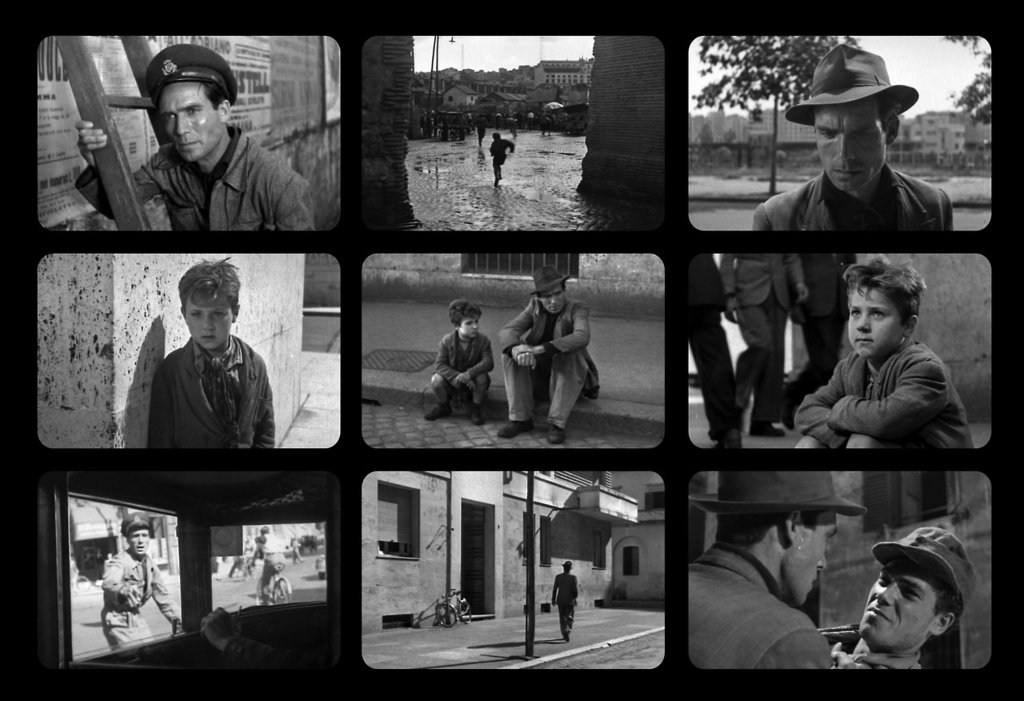In
this week class, we got to watch a 1948 black and white Italian film called Ladri di biciclette, or in English title
Bicycle Thieves, a film directed by
Vittorio De Sica. Hence, the film movement we learnt is Italian Neoralism.
Italian Neoralism?
This film movement occurred after
World War II, which is an event that ruined the national cinema and affected
the economic stability of cinema industries not only in Italy but worldwide as
well. Although World War II has affected the cinema industries, but due to the
early surrender of Italy, the production facilities in the country were quite
complete compare to other countries that faced the lost. This advantage has
made Italian cinema to resume the productions and make movies immediately.
Before World War II took place,
Italian cinema was used as propaganda to educate, or in another word,
“brainwash” the Italians with newsreels and documentaries. In 1942, the founder
of Italian Neorealism, who is Cesare Zavattini propose the idea of previous
Italian cinema should be replaced with a new form that get rid of deliberately
created and planned plots. Instead, the new form of Italian cinema should be
established and connected with contemporary social reality by using real people
and locations.
As plot is made with planned
structure, Zavattini wanted to focus on the daily life and culture of Italians.
As the plot is becoming “real”, the emphasis of Italian Neoralism is on real
people rather than professional actors. Why? Because the professional actors
were trained to project voices, but they didn’t experience the life of being an
Italian. Even if so, it is not naturally and genuine. Contemporary social
realism is an important element to portray the present society, the today’s
today.
Not only that, the shots are mostly
taken using grainy film stock as it was what available in that time, somemore
it gives a newsreeel look. Most of the shots are long take, which is one long
shot that showcase the location, environment and surrounding, which is around
20 seconds. In addition, shot on location so people will known it’s a post-war
era. People will have idea of what’s going around that time in that location.
Besides, sound
were recorded and added after the shootings. Italian Neoralism is also to
motivated to rebuilt the national reputation, to make Italian gather and unite.
Last
but not least, Italian Neoralism was known as a cinema filled with the poverty,
pessimism and negativity. However, in the fifties, the film movement starts to
decline due to the times and society were changing for the better. On a side
note, it was not popular in Italy as the Italian government did not appreciate
and favor this film movement. American films were brought in to diminish the
influence of Italian Neoralism.
Synopsis - Ladri di biciclette / Bicycle Theives
Set in
Italy’s Post World War II, Ricci got a
job offer but he must use bicycle as the main transportation. Due to poverty, his wife sells the
whole family’s bed linen to a pawn shop to redeem the bicycle which he had
already sold. On his first day at new job, unfortunately his bicycle got stolen. He starts
the journey to search for it along with his son Bruno.
Analysis
When
I was in the middle of watching this film, I think of an Iranian film Children of Heaven. Both films focus on
the journey of searching a lost object. In Ladri
di biciclette, search for bicycle. In Children
of Heaven, search for sneaker. Not sure if the latter got inspired by the
Italian film, it’s just my opinion in similarity. Both films are great, no
offence.
From what Mr. Joe told us in class, most
of the actors and actressses involved in Ladri
di biciclette are social actors or amateurs. This is quite a surprise to
me, to be honest. The overall film only has one professional actor, who is the
agent who offers the job to father.
I
can totally feel the sadness delivered in Ladri
di biciclette. The struggle faced by the father Ricci due to economic
instability whose wife sells the bed linens to pawn shop in order for the
father to redeem the bicycle for another job, the speechless father when he
realizes the bicycle got stolen and go for endless hunting for its bicycle, the
dumbfounded son Bruno questions the father who doesn’t bring the bicycle back
home, the quarrel father got with the men when he steals people’s bicycle, Bruno looks at the kid who sits next to his table has a fancier meal. All
these scenes are quite relatable even in 21st century. The film
draws the ups and downs faced by human, and how we deal with the problem. It’s real,
natural and I’m immersed in it.
In
the ending scene, where the father and son walk in the crowd with their back
facing to the camera, the location were a mix of new and old buildings. I think
the scene gives a meaning of better things are ahead of us, so move on. Although
bicycle is not found, but there is always hope.
Conclusion
I
really like the idea of Italian Neoralism being a post-war movement. I mean the film movement duplicates the realism, it
feels natural to watch, just like a normal people watching another’s people
life story. Nowadays the cinema is bombasted with special-effects movies, it’s
good to back to the basic, back to the root. Perhaps the best things in life
are unplanned, just like Italian Neoralism.
By the way, the little boy Bruno is so cute and every gesture he made, make me thought he was a professional child actor! Kudos boy!
References


No comments:
Post a Comment